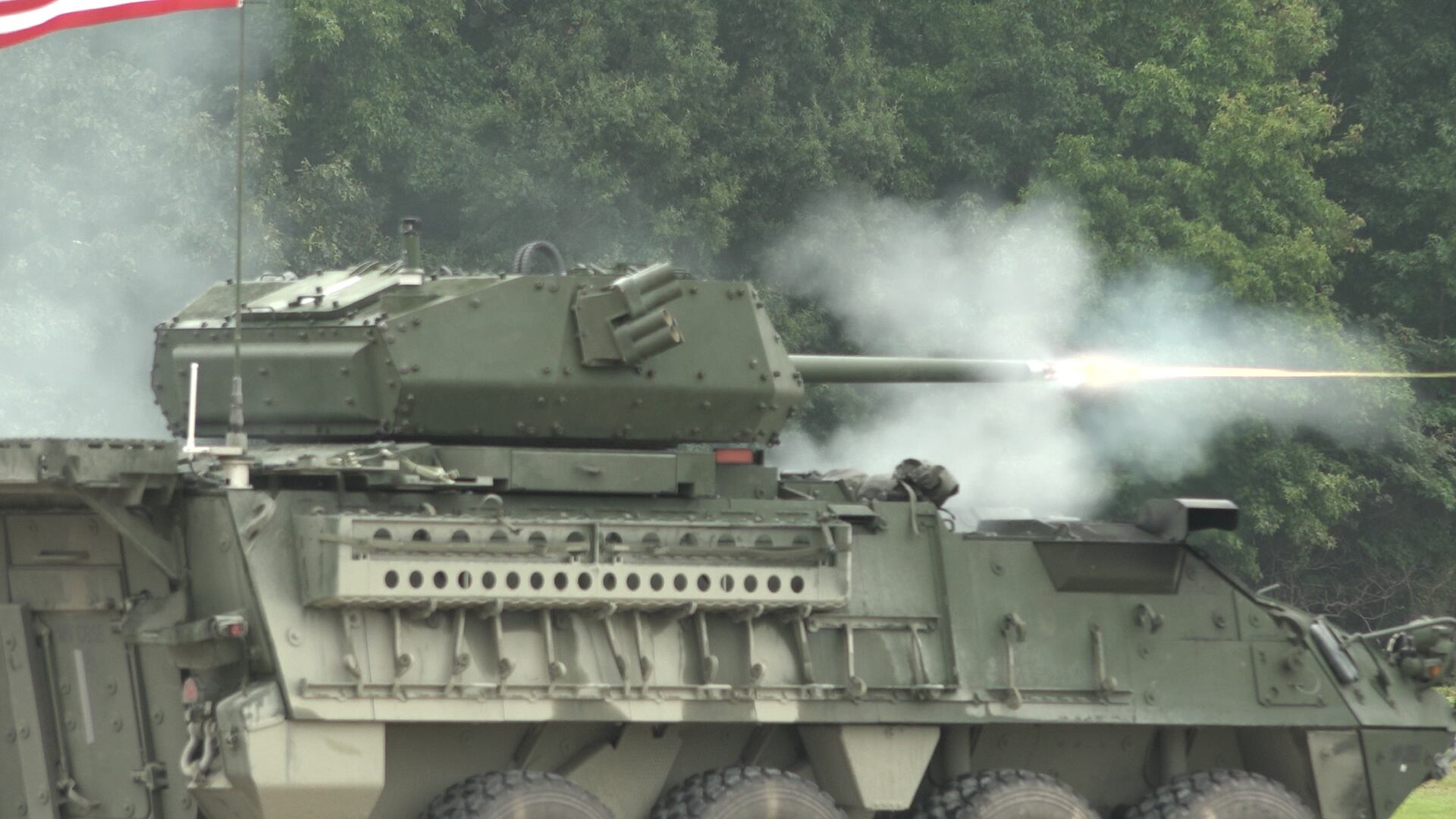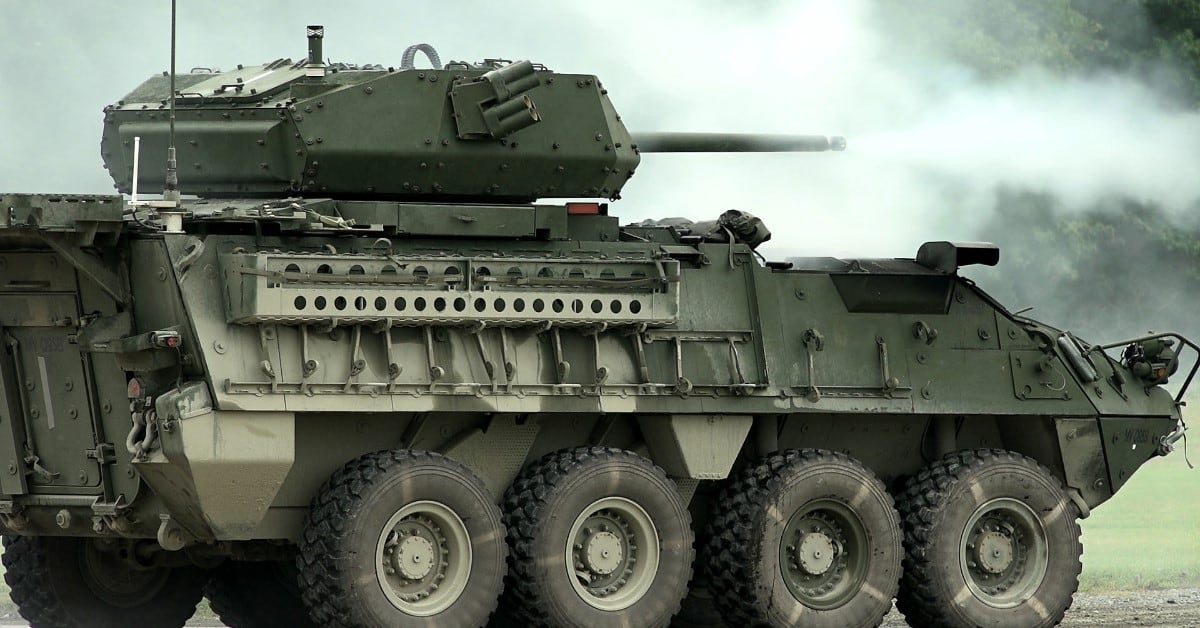UPDATE — This story has been updated to reflect accurate specifics of the number of brigades to be equipped with 30mm guns based on new information provided following the original publication of the story.
WASHINGTON — The Army has decided to outfit three out of six of its brigades equipped with Double V-Hull A1 Stryker Infantry Carrier Vehicles with 30mm guns, according to an Army official.
The service plans to open up a competition to integrate and field up-gunned DVHA1, the official told Defense News on background.
The Army Chief of Staff Gen. Mark Milley and the Army Requirements Oversight Council decided on March 20 to equip future Stryker brigades with 30mm Medium Caliber Weapon System (MCWS) capability after reviewing lessons learned from the 2nd Cavalry Regiment in Europe. But he also directed the Army to ensure that the new MCWS capability be applied to the more mobile, better protected DVH ICVVA1 that will be the basis for the future Stryker fleet, according to the official.
RELATED

Based on an urgent operational need out of Europe, the Army was provided emergency funding from Congress in 2015 — a little over $300 million — to rapidly develop and field a Stryker with a 30mm cannon specifically for the 2nd Cavalry Regiment, which is permanently stationed in Germany. The funding covered development, eight prototypes and upgrades to 83 production vehicles, as well as spares.
The Army spent 18 months to put together its upgunned Stryker using off-the-shelf solutions, such as the remote turret, from Kongsberg in Norway, and the 30mm cannon from Orbital ATK, and shipped those vehicles off to Europe for an evaluation that went on for the better part of a year.
The plan going forward is to execute a competition in two phases to select a 30x173mm-equipped MCWS integrated onto a Stryker DVH ICVVA1, the official said, which will lead to equipping the first brigade with a new capability in fiscal year 2022.
Army Contracting Command released a request for quote to begin the first phase of the Stryker MCWS program on April 9.
The recent request called for integration designs. The Army will award up to seven design integration study contracts for potential vendors to evaluate integrating a MCWS onto a Stryker ICVVA1 platform.
The Army will supply both a Stryker platform and the XM813 30mm cannon to build production representative system samples, the official said.
The service will then circulate a draft request for proposal this fall to begin the second phase of the program, which will establish a full-and-open competition to award a production contract for a MCWS integrated onto an ICVVA1, which will be based on vendors’ production representative system samples and proposals.
The MCWS will be part of a suite of lethality improvements for Stryker formations which include the Common Remote Operated Weapons Station-Javelin (CROWS-J) — that was also on the Stryker ICV Dragoon in Europe — and the Stryker Anti-Tank Guided Missile Vehicle (ATGM) engineering change proposal program.
The Army is also developing a host of other capabilities for the Stryker through the Army Futures Command Cross-Functional Team initiatives, according to the official.
RELATED

Col. Glenn Dean, the Stryker program manager, told Defense News last fall that between early user testing in 2018 and subsequent fieldings, there had been an overall “very positive response” to the lethality and effectiveness of the Stryker ICVD.
“The cannon provides a tremendous standoff and additional maneuver space, and it is very effective against the threats they are concerned about in Europe,” he said.
But some feedback suggested that the physical layout of the vehicle could use some improvements, particularly when it came to situational awareness. The turret for the cannon takes up a lot of roof and hatch space and also affects how equipment is stowed.
It is unclear what the specific requirements might be for a more lethal Stryker, but one factor up for debate could be whether there is a need to reload and operate the turret under armor, which could change the physical nature of the vendors’ designs.
Another issue to work out is what is necessary for a field-of-view inside the vehicle, how that might be achieved, and who might control the cameras providing a view of the battlefield.
Jen Judson is an award-winning journalist covering land warfare for Defense News. She has also worked for Politico and Inside Defense. She holds a Master of Science degree in journalism from Boston University and a Bachelor of Arts degree from Kenyon College.








